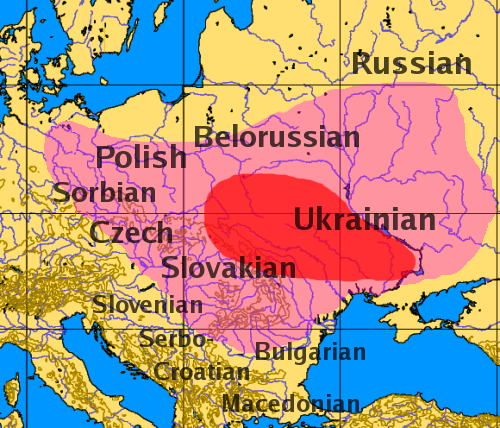 |
This is a file from the Wikimedia Commons. Information from its description page there is shown below.
Commons is a freely licensed media file repository. You can help.
|
This file is lacking author information.
Summary
Historical distribution of the Slavic languages. The area shaded in light purple is the Prague-Penkov-Kolochin complex of cultures of the 6th to 7th c. AD, likely corresponding to the spread of Slavic tribes at the time. The area shaded in darker red indicates the core area of Slavic river names (after en:EIEC, pp.524-526)
From English Wikipedia, with the same name
Comment by user : As Ancient Macedonians were not Slavs, it is inaccurate to inscribe on this map the term 'Macedonian' for the ORIGINS of the Slavic populations in Europe; there is no 'Macedonian' slavic people in ancient history. There is current question of Modern Macedonian identity between two states in the Balkans, which is a strictly geographical definition.
Licensing
 |
Permission is granted to copy, distribute and/or modify this document under the terms of the GNU Free Documentation License, Version 1.2 or any later version published by the Free Software Foundation; with no Invariant Sections, no Front-Cover Texts, and no Back-Cover Texts. A copy of the license is included in the section entitled GNU Free Documentation License. http://www.gnu.org/copyleft/fdl.htmlGFDLGNU Free Documentation Licensetruetrue
|
 |
This map image could be recreated using vector graphics as an SVG file. This has several advantages; see Commons:Media for cleanup for more information. If an SVG form of this image is already available, please upload it. After uploading an SVG, replace this template with {{ vector version available|new image name.svg}}. |
File usage
The following pages on Schools Wikipedia link to this image (list may be incomplete):
All five editions of Schools Wikipedia were compiled by SOS Children's Villages. In 133 nations around the world, SOS Children works to bring better education and healthcare to families in desperate need of support. Sponsoring a child is the coolest way to help.




